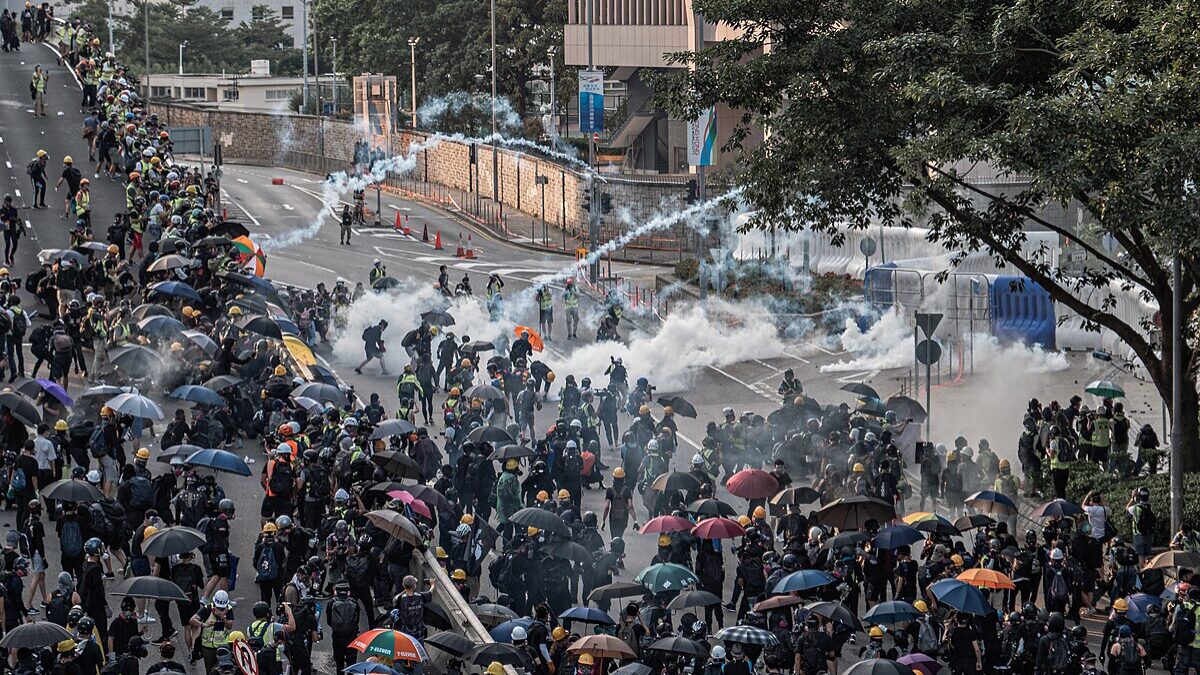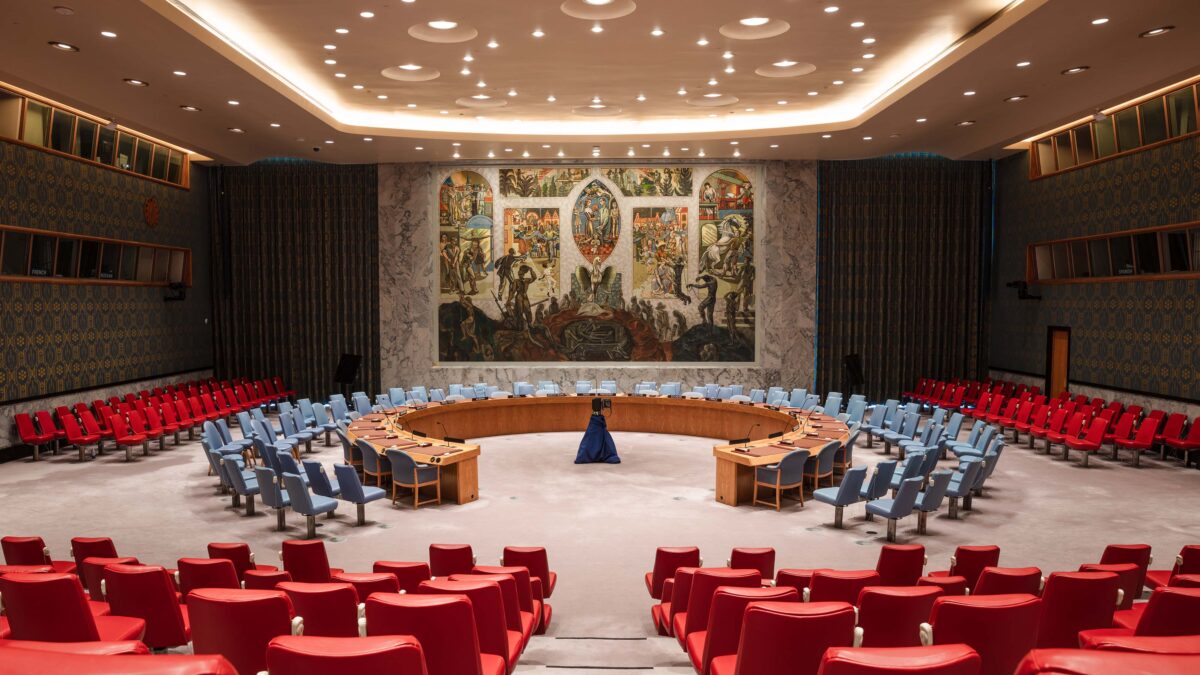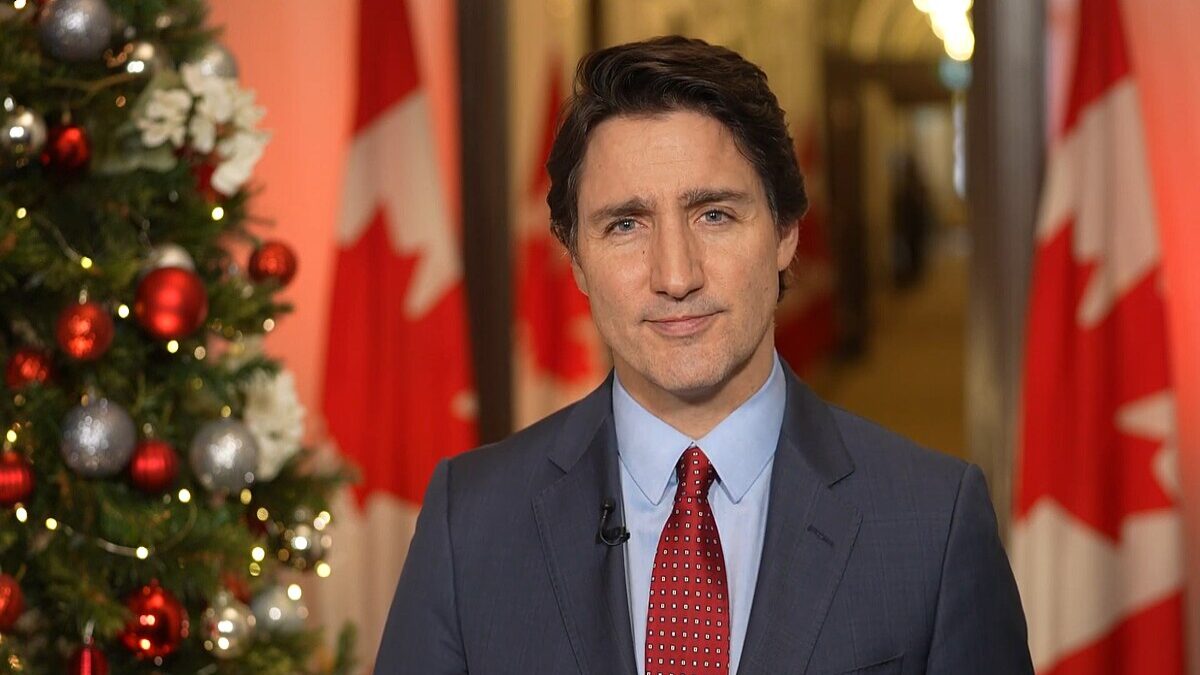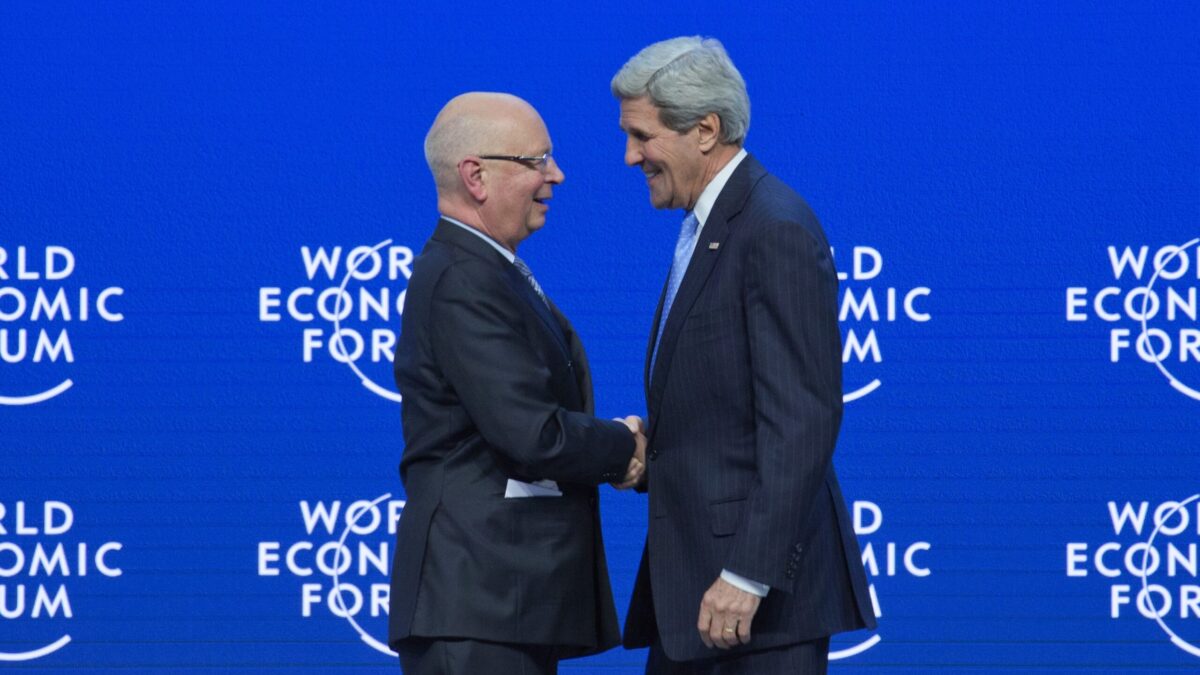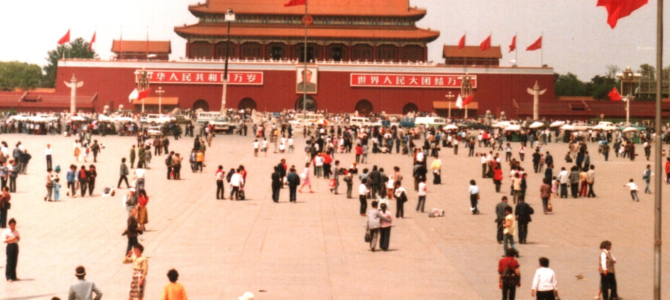
On Oct. 1, communist China celebrates the 70-year anniversary of its founding. The world will witness a highly choreographed and tightly controlled celebration full of fanfare in Tiananmen Square, the same location where authorities brutally cracked down on pro-democracy protesters in 1989. The blood stains have long been carefully washed way. Many among the celebratory crowd have either already forgotten or have never known what happened there. Even if they know, I wonder how many care.
Chinese authorities have successfully brainwashed the majority of the population to accept that the 1989 crackdown was necessary and guaranteed China’s peace and prosperity for the last 30 years. So today, when cheering for a grand military parade, which will reportedly involve “15,000 soldiers and sailors, 160 fighter jets, bombers and other aircraft, and 580 tanks and other weapons,” few will ever wonder if that military power they cheer for may turn against them one day if they dare to question the authorities.
A quick survey of the 70-year history of communist China shows an authoritarian regime that demands absolute loyalty and never hesitates to use force against its own people.
The Deadly History of Communist China
The first 30 years of the People’s Republic, from 1949-1979, were written in the tears and blood of millions of Chinese people. From land reform to the Great Leap Forward, Mao’s socialist experiment destroyed property rights, brought the country’s economy to ruin, and failed to achieve the economic equality he promised. The only thing Chinese people equally shared was misery.
The worst chapter during this period was the famine from 1958-1961. In my autobiography, “Confucius Never Said,” I documented the suffering of my family at this time. My father lost a number of family members, including two uncles, his aunt and her family of five, his maternal grandmother, and his favorite teacher from high school during the famine.
The most devastating loss was his baby brother, who was born in 1958 and died in my grandma’s arms because she had nothing to feed him. She was too hungry to produce any milk, and there was no baby formula available.
In China, official archives about the famine are still largely sealed by the government and difficult to access. We can only estimate that the death toll during the Chinese famine ranged between 30 and 60 million. To understand the scale of this atrocity, it is important to know that the estimated death toll for World War II was 60 million. So Mao inflicted human suffering in one country possibly equivalent to that of the entirety of World War II.
While millions of Chinese people were starving to death, China continued to provide food to other countries, including the murderous Khmer Rouge regime in Cambodia. Younger generations in China have no idea about this darkest chapter in Chinese history because history books published in China refer to the period from 1958-1961 as the “Three Years of Natural Disasters” or the “Three Years of Difficulties.”
Mao’s giant portrait is still hanging on the front gate of the Forbidden City palace in the center of Tiananmen Square, and people still line up to pay respects to his embalmed body even though he was responsible for the worst mass murder in human history. Unfortunately, this is not the first time, nor will it be the last time, the Chinese government distorts historical truth in order to shape a favorable narrative of the Communist Party so its rule won’t be challenged.
Those who survived the famine had to submit every aspect of their lives to government control: what to wear, how much to eat, what to do for a living, and where to live. But the regime wasn’t satisfied until it had the full control of everyone’s mind too.
Through numerous political movements including the Cultural Revolution, close ties within families and communities broke down: Friends were forced to denounce friends, spouses reported on each other, children condemned their parents, and family members betrayed one another during persecutions. Everyone became fearful of one another and stopped trusting and relying on one another.
The Bold Idea That Started an Economic Revolution
By 1979, three years after Mao’s death, China was a country with 1 billion poverty-stricken hungry people and a broken economy. The gross domestic product per person in China was only $183, worse than Zimbabwe’s. No one was certain how long the country could continue on this path.
Many people inside and outside China credit Chinese Communist leader Deng Xiaoping for saving China through economic reform. But the truth is that we wouldn’t talk about the economic miracle in China today if not for 18 ordinary villagers in Xiaogang village of Anhui Province.
In 1979, tired of constant starvation, these farmers proposed a bold idea to their village leaders. The leaders would secretly allow these farmers to be responsible for the gain and loss of their own production in the field. Extra production exceeding the government quota belonged to the farmers who produced it. Farmers were allowed to sell their extra produce in the black market.
The village leaders ran the risk of being executed as counter-revolutionaries if this arrangement were discovered. So they signed a “life and death” contract, which stated that farmers agreed to take care of the leaders’ families if anything bad happened to them. This gamble paid off. Once set free, the production and the standard of living of these farmers increased in a very short time.
Like his communist comrades, Deng didn’t know how to improve China’s economy. But he demonstrated pragmatism in his readiness to lend his support to an economic reform idea if it were tested successfully on a small scale. When Deng heard of the Xiaogang experiment, he personally praised the village leaders.
The village leaders were not punished. Instead, their method was adopted by other regions throughout China, and it became the “household responsibility system,” which allowed Chinese farmers to keep excess produce for their own use or to trade with others. This simple act revived China’s agriculture industry, saved millions of lives, and kickstarted an economic boom for the next 30 years.
Few inside or outside China ever heard of these courageous farmers of Xiaogang. Instead, the Chinese government pats itself on the back for lifting billions of people out of poverty. The truth is that after the Communist Party loosened its grip on Chinese people economicaly, Chinese people lifted themselves out of poverty through creativity and hard work.
Hiding the True History of Communist China
While the Communist Party (CCP) has been willing to let Chinese people enjoy a certain degree of economic freedom, it won’t let go of its control over the people’s political freedom. The crackdown on the pro-democracy movement in 1989 was a manifestation of the party’s intolerance of dissent.
The CCP treats the 1989 crackdown the same way it treats all other dark chapters in its history: It covers it up, pretends nothing bad ever happened, and when confronted with evidence, it blames others — especially the West, for “interfering” in China’s internal affairs. Now, with China’s growing economic and military clout, some CCP members will even act defiantly with a “so what” attitude because they believe the past iron fist approach was necessary to ensure stability and security of the present and future.
This inability and unwillingness to face historical truth is the root cause of many domestic and international challenges China faces now. Never willing to condemn the evil doings of late Dictator Mao, now China is ruled by another dictator for life, Xi, who follows Mao’s playbook: Build a personal cult, eliminate political enemies, and ruthlessly suppress domestic dissent.
Chinese people complain about the moral decay and rampant corruption in their society, from no one wanting to help elders who fall down to toxic milk powder and faulty vaccines for babies. Yet few seem to recognize that today’s trust deficit in China is one of the long-lasting legacies from Mao’s Cultural Revolution, which tore open the moral fibers that once kept community and relationships close and sowed distrust for generations to come.
The History That Haunts China’s Future
Failing to learn lessons from 1989 explains Beijing’s inability to handle the ongoing Hong Kong crisis. Under the international media’s watchful eyes and concerned about the economic backlash, the CCP doesn’t want to send troops to brutally crackdown on Hong Kong protesters, at least not yet.
In the meantime, it has never learned and does not want to learn how to engage in civil policy debate and compromise in a democratic way. When its iron fist is being pushed back by freedom-loving Hong Kongers’ iron will, it doesn’t know what to do.
Internationally, Chinese President Xi is facing global pushback for his ambitious “One Belt One Road” international infrastructure initiative, which some countries view as a “debt trap diplomacy” for expanding China’s geopolitical influence at other countries’ expense. Xi is also fighting a losing trade war with the United States.
Trump’s trade tariffs struck the Chinese economy when it was already declining, and the effects have been devastating. By giving the government all the credit for China’s economic boom in the past, now the government, especially Xi, is inevitably taking all the blame for China’s worsening economic situation and the global pushback. But without a democratic representative system in place, no one but Xi can hold Xi accountable.
As communist China turns 70, an inevitable question is how long it will last. Compared to other failed communist and socialist regimes, communist China has been unbelievably resilient. Yet its past continues to haunt its future. No one knows what is going to happen to China in the future. All we know for sure is that “those who forget history are condemned to repeat it.”


